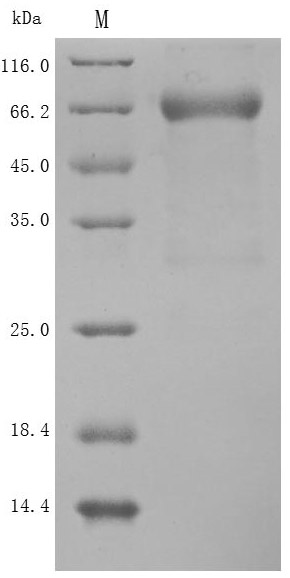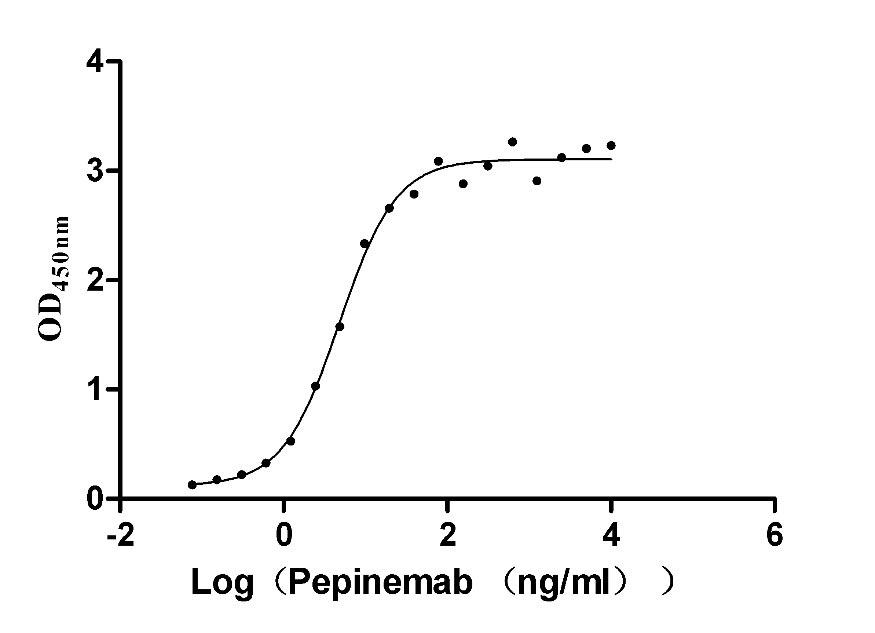The recombinant human semaphorin-4D (SEMA4D) is an active protein generated by the expression of the gene fragment encoding amino acids 22-734 of the human SEMA4D in mammalian cells. The 10xHis tag is fused to the C-terminal of this protein. Its purity is over 90% measured by SDS-PAGE. On the gel, this protein migrated to the molecular weight band of approximately 85 kDa. It contains less than 1.0 EU/ug endotoxin determined by the LAL method. In the functional ELISA, this recombinant SEMA4D protein can bind Pepinemab and the EC50 is 4.035-5.743 ng/mL. SEMA4D, also known as CD100, has diverse effects on immunologic processes, including immune cell proliferation, differentiation, activation, and migration, through binding to its specific membrane receptors CD72, PLXNB1, and PLXNB2. It is also involved in the control of neurogenesis, angiogenesis, and tumor progression.








